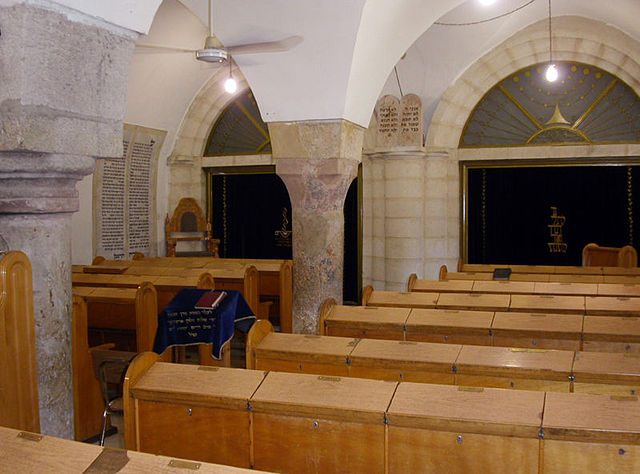The Ramban Synagogue is the second oldest active synagogue in the Old City of Jerusalem, after only the Karaite Synagogue. It dates back in its current location to sometime around 1400. Tradition holds that as an institution, it was founded by the scholar and rabbi Moshe ben Nachman, also known as Nachmanides or Ramban, in 1267, but at a more southerly location on Mount Zion, to help rebuild the local Jewish community, which indeed expanded because of the synagogue's presence. The synagogue was moved to its current location around 1400, where it was destroyed in 1474, rebuilt in 1475, and continued functioning until being closed by the Muslim authorities in the late 16th century. The building was used for industrial and commercial purposes until its destruction in the 1948 Jordanian siege of the Jewish Quarter. After the 1967 Six-Day War, it was rebuilt over the old ruins and reconsecrated as a synagogue.
Interior (2006)
Shown in the Casale Pilgrim (16th-century)
Moses ben Nachman, commonly known as Nachmanides, and also referred to by the acronym Ramban and by the contemporary nickname Bonastruc ça Porta, was a leading medieval Jewish scholar, Catalan rabbi, philosopher, physician, kabbalist, and biblical commentator. He was raised, studied, and lived for most of his life in Girona, Catalonia. He is also considered to be an important figure in the re-establishment of the Jewish community in Jerusalem following its destruction by the Crusaders in 1099.
21st-century artistic depiction of Nachmanides in Acre, Israel
Nachmanides's letter to his son displayed on the Ramban synagogue in Jerusalem
A street in Jerusalem bears his name





